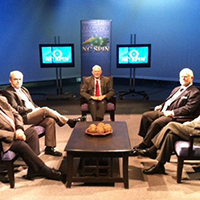Improving voter turnout
Published March 28, 2024
By Tom Campbell
The 2024 primary election results should concern us. What should truly trouble us is that only 20.02 percent of North Carolina’s registered voters cast ballots, highlighting a trend that threatens the future of democratic elections. Here are the voting percentages furnished by the North Carolina State Board of Elections:
Primary election General election
2024 20.02% -----
2022 19.80% 51.14%
2020 31.2% 75.35%
2018 14.35% 52.98%
2016 35.69% 68.98%
2012 34.66% 68.40%
Numbers don’t lie. North Carolinians are not sufficiently engaged in selecting our leaders. Our turnout in 2020 (75.35%) was greater than the nation’s 62.8 percent, ranking us 31st among the countries.
Why aren’t people voting? Perhaps they don’t feel their vote counts, but they are increasingly asking “are these the best we’ve got?” Too many believe voting just doesn’t matter.
If we can agree that larger voter turnouts result in better election outcomes, it behooves us to ask what can be done to get more voters to the polls? Here are a few suggestions for improving turnout on the national level.
1. Expand voter registrations. It should be an automatic process (like with Social Security) that when a citizen reaches the age of 18, they are automatically registered to vote. Political parties no longer have the influence they once had, as proven by the fact there are more unaffiliated registrations than for either party, so the newly registered voter should be “unaffiliated.” If they choose to affiliate with a party, they can do so later.
2. The nomination selection process is badly broken. Two few and largely insignificant states play too large a role in selecting presidential nominees. Perhaps we should institute a national primary where every state votes the same day and the top two or three candidates with the most votes are on the November ballot.
3. Eliminate the electoral college in favor of election by the largest popular vote. Five of our 46 presidents won without getting a majority of the votes, including George W. Bush and Donald Trump. 16 states have now signed on to the National Popular Vote Interstate Compact which declares that the candidate with the most popular votes will win the election. Pew Research shows that 65 percent favor the concept.
This could also remedy another problem. Data demonstrates that 41 states are largely ignored by the two candidates. Essentially, nine “battlefield” states get the most attention, candidate visits and advertising. This would level the playing field some.
4. Require more transparency from independent expenditure groups and PACs. They have far fewer restrictions than are required for candidates and far too much influence on election outcomes. We should know who belongs to the group, who contributes money and how much they spend long before voting day. We believe in freedom of speech, but tighter controls should be placed on the often-unfounded accusations and character assassinations they level. These entities have rights, but not unlimited rights.
And here are six suggestions for improving North Carolina’s turnout:
1. Restore the primary election date to the first Tuesday in May (or perhaps even July or August). March is ridiculously early to choose party nominees when the election isn’t until November. Besides, we’ve shown our votes aren’t decisive in choosing presidential nominees.
2. Make it easier for candidates to put their names on ballots. Our present system for ballot access requires signatures from large numbers of registered voters and is prohibitive. We need more, not fewer candidates - and not just from the two parties.
3. Remove the party identification from candidate names. We should not vote for someone just because they have a D or R beside their name. If voters aren’t willing to do the work to learn about the candidates and their positions, they should not vote in that race.
4. Eliminate the runoff system. A statewide runoff costs taxpayers more than three million dollars and the typical turnout for a second primary is half or less than the primary percentage. Some states are experimenting with ranked choice voting or instant runoffs. The candidate with the most votes should win.
5. Make election day a state holiday, with a caveat. In order for an employee to be paid for the time off (or receive some incentive) he or she must present proof they voted.
6. Shorten the ballot. Our state votes for far too many offices and the recent primary proves the point. Analysts estimate that only 20 percent of the 20 percent who voted in our primary cast votes all the way down our lengthy ballot. It is too long.
Our Republic has survived more than 200 years because citizens felt it their duty to vote. It’s time to fix systems in need of repair and it’s not too early to begin.
Tom Campbell is a Hall of Fame North Carolina broadcaster and columnist who has covered North Carolina public policy issues since 1965. Contact him at tomcamp@carolinabroadcasting.com







